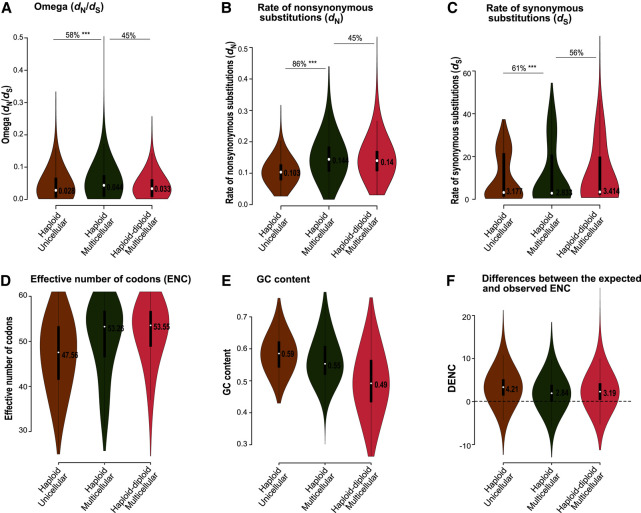Figure 5.
Combined effect of body architecture and life cycle types on molecular evolution. The violin plots show the distribution of omega (A), rates of nonsynonymous substitutions (B), rates of synonymous substitutions (C), effective number of codons (D), GC content (E), and the difference between the expected and observed ENC (F) for three combinations of body architecture and life cycle type. The horizontal lines refer to comparisons across body architecture types, with indications of the percentages of genes following expected patterns in these comparisons, and the significance of the differences as given by P-values of the gene-by-gene Wilcoxon test. (*) P ≤ 0.05, (**) P ≤ 0.001, (***) P ≤ 0.0001. The lower values of dN and ENC suggest stronger selection intensity in unicellular haploid relative to other categories, and highly similar values of dN and ENC between multicellular haploid and haploid–diploid lineages suggest similar levels of selection between these groups.

